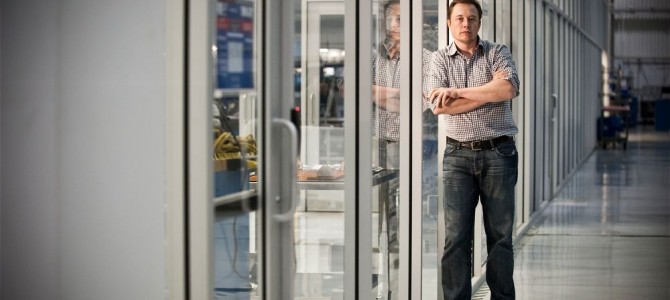Disgraced former Oregon Gov. John Kitzhaber isn’t the only big name caught up in the emerging green energy scandal in the Pacific Northwest: SolarCity, the brainchild of billionaire corporate welfare queen Elon Musk, was also heavily involved in some of Kitzhaber’s shady schemes. According to an extensive investigation by The Oregonian, a local paper, this particular scheme had it all: political corruption, broken deal terms, and $0.93/hour prison labor.
According to The Oregonian’s investigation, it all started with a $27 million solar array project for the Oregon Institute of Technology and Oregon State University. The project brought with it $12 million in tax credits. After the first vendor brought in by the state filed for bankruptcy, Oregon turned to two companies for help — SolarWorld and its bitter rival, Elon Musk’s SolarCity. SolarCity would oversee the project and do the local engineering and installation work. The two firms were expected to buy and hire locally in order to goose the regional economy and create high-paying area jobs.
But that’s not what happened.
SolarWorld, which made a name for itself by manufacturing its products in the U.S. instead of using cheap, overseas labor like SolarCity did, was unable to handle the scope of work (UPDATE: a SolarWorld rep e-mailed The Federalist after this article was initially published and took issue with this characterization, claiming that rather than SolarWorld being unable to handle the project, SolarCity canceled the contract in retaliation for SolarWorld winning a high-profile trade case against SolarCity). In order to save the project, and its $12 million in tax credits, Elon Musk’s SolarCity stepped in to complete the project by itself. And how did SolarCity go about its work? By hiring prison labor at the rate of $0.93 per hour, roughly one-tenth of the state’s current minimum wage in 2013 of $8.95 per hour:
Firing SolarWorld was just business, said Will Craven, SolarCity spokesman.
But if workers in Hillsboro weren’t going to make the state’s panels, who would?
Shain assured state officials that SolarCity had found “alternative modules of U.S. manufacture, and very possible Oregon manufacture.”
SolarCity’s alternative: Prison labor.
SolarCity told government officials it would use local labor, but it never informed them that it would be using incarcerated local labor instead of trained technicians who generally earn upwards of $11 per hour:

According to The Oregonian:
Under a subcontractor, Norcross, Georgia-based Suniva, the panel work went behind the walls at the Federal Correctional Institute in Sheridan. Inmates paid 93 cents an hour assembled the panels. That was in contrast to SolarWorld factory pay — $11 an hour to start.
Craven acknowledged that using inmate labor “may not have been in the spirit” of the tax credit program. He said state officials knew prisoners were involved.
State officials said they were unaware of the inmate component until questioned recently by The Oregonian/OregonLive.
“They used inmates?” Simonton asked. “That’s unfortunate.”
While it may be unfortunate, it is not even remotely surprising given the involvement of an Elon Musk company. Yes, he is remarkably successful. He’s built a huge car company, a huge space company, and a huge solar energy company. What he hasn’t done is build any of those companies without massive taxpayer subsidies.
Tesla depends on federal electric car subsidies, to the tune of $7,500 per vehicle, as well as government-enabled zero emission vehicle credits. SpaceX depends on large government procurement contracts. And SolarCity depends on renewable energy mandates that force states to go in search of “alternative” energy sources that are expensive and economically unsustainable. But that’s not enough, apparently. Elon Musk’s SolarCity also felt compelled to use $0.93/hour government jail jobs for its labor needs.
And even with all that — the subsidies, the mandates, the contracts, and the cut-rate prison labor — Elon Musk’s companies still can’t consistently make money. Tesla has never turned an annual profit, but it had racked up an accumulated $1.4 billion in losses by the end of 2014. The same goes for SolarCity, which had generated more than a quarter billion dollars in accumulated losses through the end of last year. While SpaceX is rumored to be profitable, it’s hard to believe it got there without tens of millions of taxpayer dollars in the form of Pentagon and NASA procurement contracts (because SpaceX is a private company and is not required to publicly release its financials, its profitability claim cannot be independently verified).
There’s nothing inherently wrong with using prison labor, but there’s something super sketchy about a billionaire corporate welfare queen using incarcerated contractors in order to skirt the local hiring requirements of a lucrative taxpayer-funded project. Elon Musk may be a huge fan of hiring taxpayer subsidies, but it turns that at least one of his companies is not so keen on hiring actual taxpayers.









